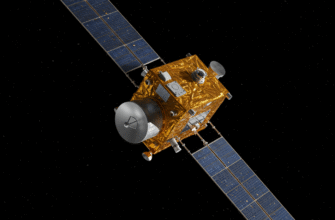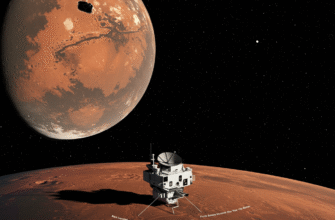Gazing up at the inky blackness of the night sky, dotted with countless pinpricks of light, it’s almost impossible not to wonder: are we truly alone? This question, as old as human consciousness perhaps, has spurred endless debate, countless stories, and a deep-seated yearning for an answer. While philosophers and dreamers have long pondered this cosmic loneliness, scientists eventually sought a more structured approach. This led to the birth of the Drake Equation, a fascinating, if somewhat controversial, tool designed to estimate the number of active, communicative extraterrestrial civilizations right here in our own Milky Way galaxy.
The Drake Equation, conceived by astronomer Dr. Frank Drake in 1961, wasn’t initially meant to yield a definitive number of alien civilizations. Instead, it served as a framework to organize discussions at the first Search for Extraterrestrial Intelligence (SETI) conference. Its real strength is in how it dissects a vast unknown into more approachable, albeit still challenging, questions, guiding our thoughts on a profound mystery.
The equation itself looks like this: N = R* × fp × ne × fl × fi × fc × L. Seems a bit like alphabet soup, doesn’t it? But each of those letters represents a crucial factor, a piece of the puzzle we need to consider if we’re to make any kind of educated guess about our galactic neighbors. The beauty of the equation isn’t necessarily in the final number ‘N’ it spits out (which can vary wildly depending on your optimism or pessimism), but in the journey it takes us on, forcing us to confront what we know, what we don’t know, and what we might never know.
Dissecting the Cosmic Calculation: The Variables
Let’s unpack this equation term by term, exploring what each one means and how our understanding has evolved, or in some cases, remained frustratingly static.
R*: The Galactic Star Factory
The first ingredient in our cosmic recipe is R*, which represents the average rate of star formation in our galaxy. Think of the Milky Way as a giant stellar nursery, constantly churning out new suns. We need stars, after all, because planets (and any life they might host) orbit stars. This isn’t about how many stars are born per second, but rather an average over cosmic timescales. Early estimates were fairly broad, but as astronomical instruments and our understanding of galactic dynamics have improved, we’ve managed to narrow this down. Current thinking suggests that our galaxy forms a handful of new stars – perhaps something like one to three solar masses worth of material coalescing into stars – each year. It doesn’t sound like much, but over billions of years, that adds up to a lot of potential homes for life.
fp: Planets are Plentiful
Next up is fp, the fraction of those newly formed stars that actually have planetary systems. For a long time, this was a huge question mark. We knew our own solar system had planets, obviously, but were we an oddity? A cosmic fluke? The last few decades have spectacularly answered this one. Thanks to missions like Kepler and TESS, and ground-based observatories, we’ve discovered thousands of exoplanets – planets orbiting other stars. The data strongly suggests that planets are not rare at all; in fact, it seems that most stars likely host at least one planet, and many host multiple. So, fp is probably quite high, perhaps close to 1 (meaning nearly 100% of stars have planets). This was a huge boost for alien hunters, turning a major uncertainty into a near certainty: planetary systems are common cosmic currency.
ne: The ‘Goldilocks’ Worlds
Now we get to ne. This stands for the average number of planets, per star that has planets, that can potentially support life. This is where the famous “habitable zone” or “Goldilocks zone” concept comes in – planets that are not too hot, not too cold, but just right for liquid water to exist on their surface. Liquid water is widely considered a key ingredient for life as we know it. But ne is more complex than just distance from the star. It also involves the planet’s size (too small and it can’t hold an atmosphere, too large and it might be a gas giant), its composition, the presence of a protective magnetic field, and even the type of star it orbits (some stars are too violent or short-lived). While exoplanet searches are identifying more and more candidates in habitable zones, determining their true habitability from light-years away is a monumental challenge. Estimates for ne vary, but the discovery of Earth-sized planets in the habitable zones of other stars gives us reason to believe this number is not zero.
fl: The Spark of Life
Here’s where things get really speculative. fl is the fraction of those potentially habitable planets on which life actually arises. We have exactly one data point for this: Earth. Life arose here, but we still don’t fully understand how abiogenesis – the process by which life springs from non-living matter – occurred. Was it an incredibly rare, almost miraculous event? Or is it a common, almost inevitable outcome given the right conditions and enough time? Scientists are exploring various pathways, from deep-sea hydrothermal vents to shallow ponds zapped by lightning. If life is a relatively easy chemical step, fl could be high. If it requires an extraordinary series of fortunate coincidences, fl could be vanishingly small. This term alone can swing the final ‘N’ from a galaxy teeming with life to one where Earth is a lonely outpost.
fi: The Dawn of Intelligence
Assuming life does get started on some of these planets (fl > 0), what fraction of that life evolves to become intelligent? That’s fi. Again, we’re hampered by our single example. On Earth, life existed for billions of years before Homo sapiens arrived on the scene with our big brains and tool-making prowess. Was the evolution of intelligence a fluke, a specific adaptation to a unique set of environmental pressures on our planet? Or is intelligence a common evolutionary pathway, perhaps a convergent trait that arises in many different lineages given enough time and complexity? Some argue that intelligence offers significant survival advantages, making it more likely to appear. Others point out that the vast majority of species on Earth have done just fine without developing philosophical treatises or radio telescopes. This remains one of the great unknowns.
fc: Reaching Out (or Leaking Out)
If intelligent life does evolve, what fraction of those species develop technology that releases detectable signs of their existence into space? This is fc. We’re talking about civilizations that, intentionally or unintentionally, create signals that could traverse interstellar distances and be picked up by someone like us. This could be deliberate communication attempts (like the Arecibo message) or simply the leakage from their everyday technologies – radio broadcasts, television signals, powerful radar systems, or perhaps even evidence of large-scale astro-engineering. What if a civilization is highly intelligent but has no interest in, or sees no need for, such technologies? Or what if their technology is so advanced it’s unrecognizable to us, or operates on principles we haven’t discovered? This term highlights our own anthropocentric biases in searching for “life as we know it” and “technology as we understand it.”
L: The Fleeting Window of Communication
Finally, and perhaps most poignantly, we have L. This represents the length of time for which such communicative civilizations release detectable signals into space. This is a hugely influential factor and, sadly, one that could be depressingly short. Consider humanity: we’ve only been capable of sending radio signals into space for a little over a century. How long will we continue to do so? Civilizations might self-destruct through war or environmental catastrophe. They might outgrow the need for easily detectable radio technology, moving to more efficient, directed communication methods (like lasers or something we can’t even imagine). They might achieve a state of sustainable, quiet existence, or even transcend physical being. If L is typically short, say a few hundred or a few thousand years, then even if many civilizations arise, the chances of them overlapping in time with us, and being close enough to detect, become very slim. This is often seen as a potential answer to the Fermi Paradox (“Where is everybody?”).
It’s crucial to remember that while the Drake Equation provides a fascinating structure for thought, the final ‘N’ value is extremely sensitive to the inputs. Because several terms, particularly fl, fi, and L, are based on pure speculation rather than hard data, the equation can produce results ranging from us being utterly alone to a galaxy teeming with communicative societies. Therefore, the process of considering each factor is often more enlightening than any single numerical outcome.
More Than Just a Number: The Equation’s True Value
Given the vast uncertainties, especially in the latter terms, it’s clear that the Drake Equation isn’t about getting a precise, definitive answer for ‘N’. If you plug in pessimistic values for fl, fi, and L, you might conclude that N is less than 1, meaning we are likely alone in the galaxy. If you’re an optimist, you can easily get values suggesting thousands, or even millions, of civilizations. So, what’s the point?
The real power of the Drake Equation lies in its ability to break down an overwhelming question into a series of smaller, more manageable (though still incredibly difficult) questions. It provides a roadmap for research. Astronomers work on R*, fp, and ne. Astrobiologists and chemists ponder fl. Evolutionary biologists and paleontologists consider fi. Sociologists, futurists, and SETI researchers grapple with fc and L. It stimulates interdisciplinary thought and highlights the gaps in our knowledge.
Criticisms and Caveats
Naturally, the Drake Equation isn’t without its critics. One common jibe is that it’s a prime example of “GIGO” – Garbage In, Garbage Out. If your input values are little more than guesses, then your output will be equally unreliable. This is a fair point, particularly for those later, biology- and sociology-dependent terms.
Another criticism is that it’s inherently anthropocentric. It assumes life elsewhere will follow a somewhat similar trajectory to life on Earth, developing intelligence and technology in ways we can recognize. What about non-biological intelligence? What about civilizations that exist in forms or dimensions we can’t perceive? The equation doesn’t really account for these more exotic possibilities. It’s also focused on *communicative* civilizations, potentially missing a vast amount of simpler life or non-communicative intelligent life.
The Equation in the 21st Century
Despite its age and its limitations, the Drake Equation remains a relevant and thought-provoking tool. The explosion of exoplanet discoveries has put the early terms (R*, fp, and to some extent ne) on much firmer ground than they were in 1961. We now know that planets, including potentially habitable ones, are common. This shifts the burden of uncertainty even more heavily onto those later terms: the origin of life, the evolution of intelligence, and the longevity of technological civilizations.
The ongoing search by SETI programs, which have so far yielded a “great silence,” also feeds back into our estimates, particularly for fc and L. If civilizations are common and long-lived, why haven’t we heard anything? This question leads directly to the Fermi Paradox, and the Drake Equation provides a framework for exploring potential solutions.
A Mirror to Ourselves
Ultimately, the Drake Equation is more than just an astronomical calculation; it’s a mirror reflecting our own hopes, fears, and limitations. Contemplating each term forces us to consider the conditions that led to our own existence, the path our own civilization is on, and our potential future in the cosmos. Whether N turns out to be vast or infinitesimally small, the quest to understand our place among the stars continues to drive scientific inquiry and ignite the human imagination. The equation doesn’t give us the answer, but it beautifully frames the question, and that, perhaps, is its most enduring legacy. The search for ‘N’ is, in many ways, a search for understanding ourselves.









